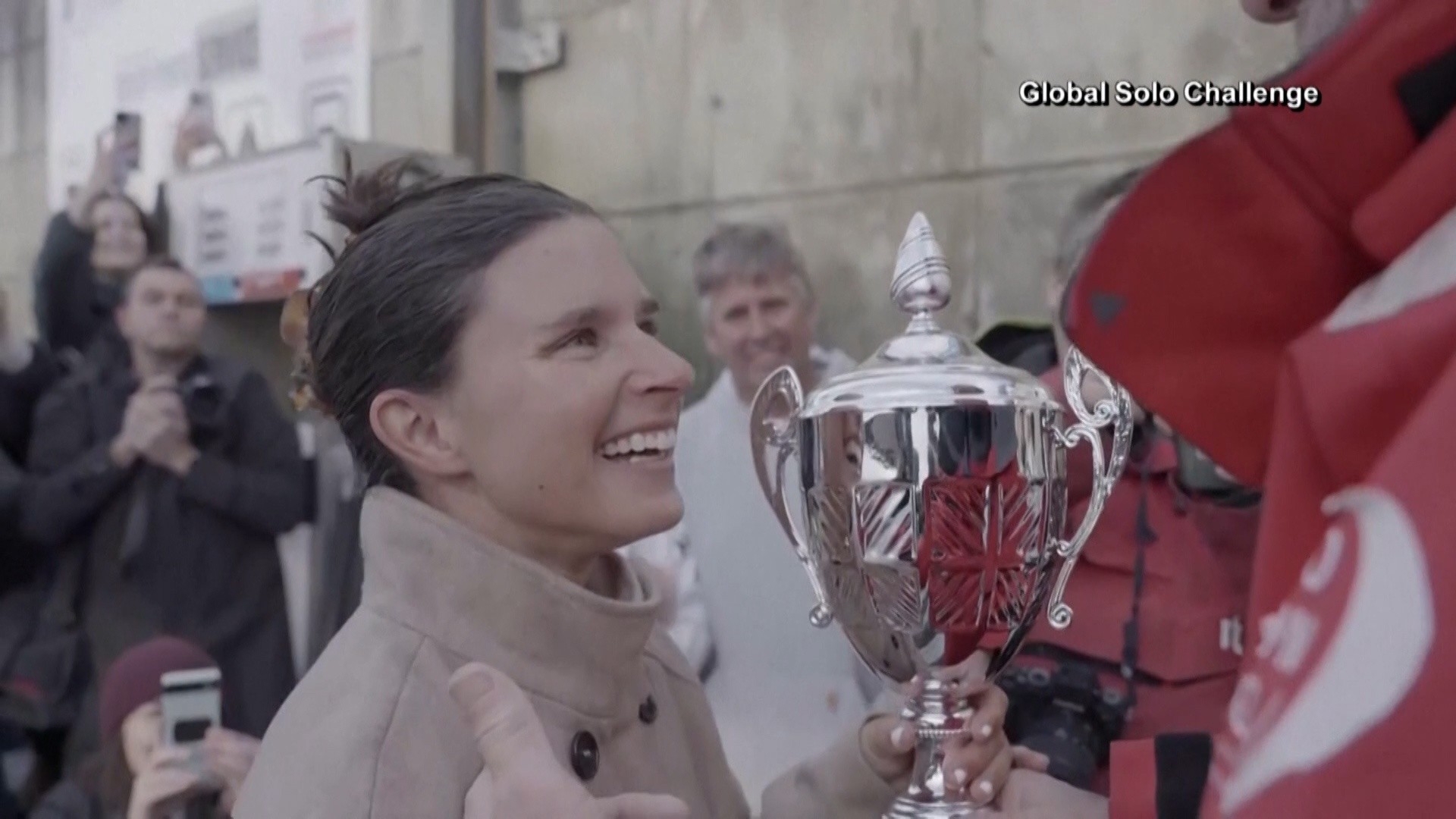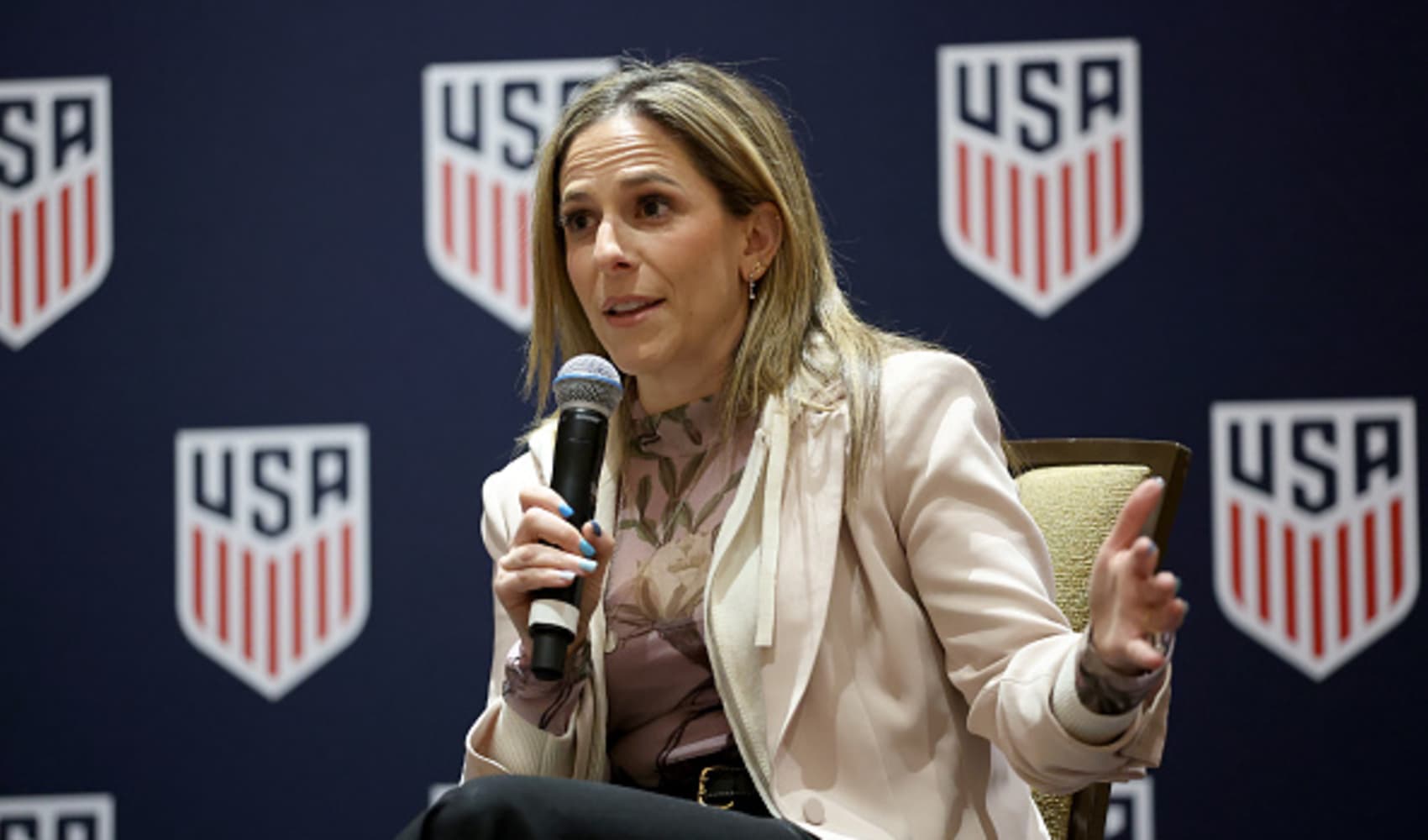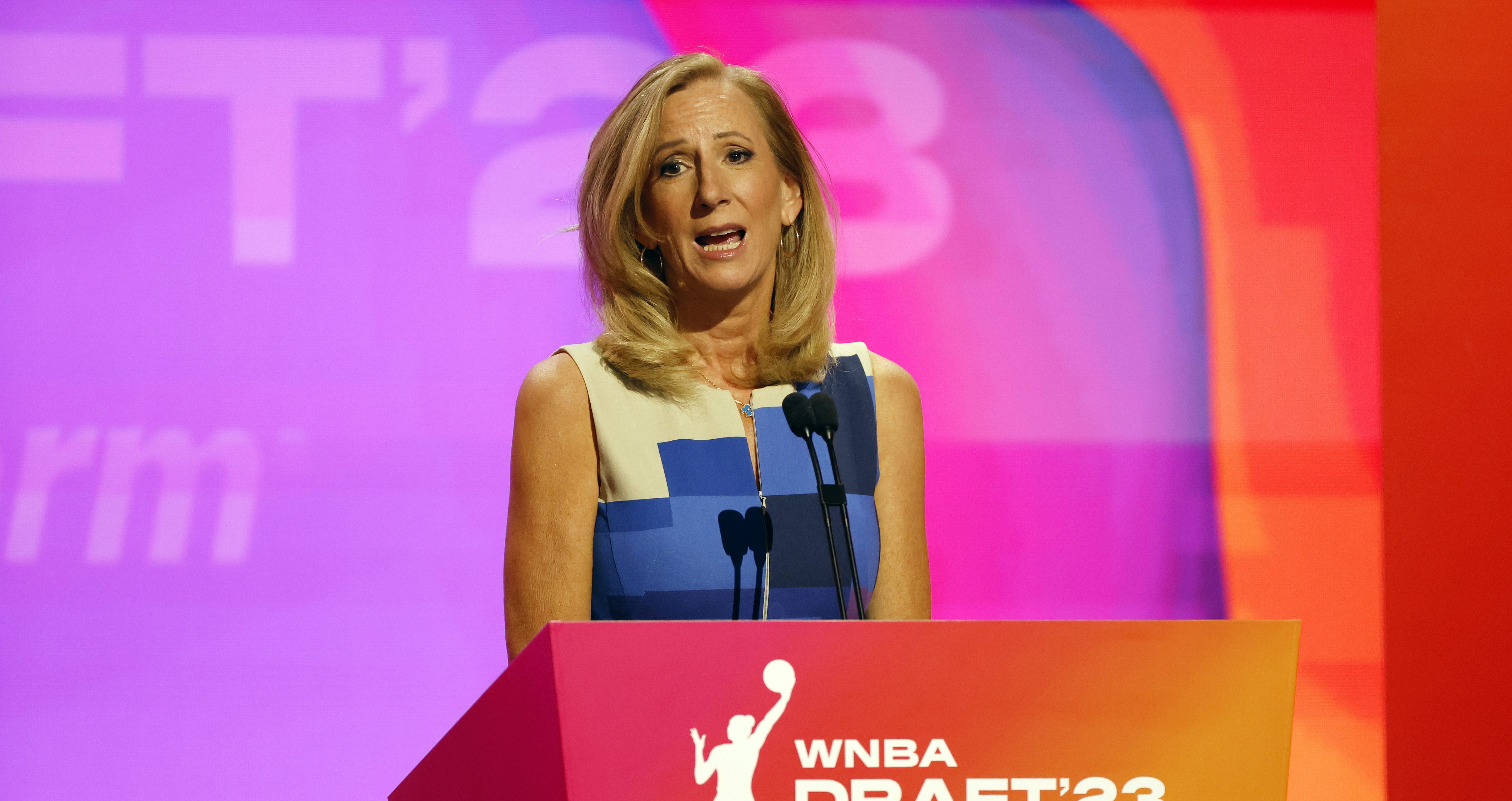
Jody Mikhail was a sophomore at Pennsylvania's Cumberland Valley High School when a poster for a new girls’ wrestling club caught her eye. So Mikhail, a senior now, tried the sport.
“I fell in love with it the first time,” she said.
Unlike previous generations, she's hardly alone.
Girls’ wrestling has become the fastest-growing high school sport in the country, sanctioned by a surging number of states and bolstered by a movement of medal-winning female wrestlers, parents and the male-dominated ranks of coaches and administrators who saw it as a necessity and a matter of equality.
We've got the news you need to know to start your day. Sign up for the First & 4Most morning newsletter — delivered to your inbox daily. Sign up here.
Where once girls wrestled on boys teams and against boys, increasingly they are wrestling on girls teams and against girls. And now that they are wrestling in sanctioned and official tournaments against girls, their names are going onto plaques on their high schools’ walls and into state record books.
This year, Kentucky, Rhode Island and Pennsylvania held their first state-sanctioned girls' wrestling championships, while Louisiana became the 45th state to sanction the sport. At the collegiate level, women’s wrestling is designated as an “emerging” sport and is on track to become a championship-level sport in 2026, the NCAA said.
A rapidly growing sport
In Pennsylvania — where the Penn State men are ranked No. 1 and the state’s male and female wrestlers dominated last year’s 16-and-under national team championships — the number of girl wrestlers in high schools nearly doubled this year as the state rocketed to more than 180 high school teams from none in 2020.
Hundreds of girls competed in Pennsylvania’s first sanctioned state tournament, including Mikhail, after years of girls having no choice but to wrestle boys or, if they did wrestle girls, seeing the same handful of faces, year after year, in tournaments organized by local wrestling organizations.
Even for girls who compete nationally or hope to wrestle in college, wrestling in state-sanctioned tournaments brings status.
“It really does bring this level of, I think, having these girls feel seen,” said Brooke Zumas, a former wrestling coach who was active in the movement to get the sport sanctioned in Pennsylvania.
Girls who have competed for years are seeing new faces and big crowds in this year’s state-sanctioned championship tournaments.
“There were never tournaments like this,” said Savannah Witt, a state champion wrestler from Pennsylvania’s Palisades High School who has wrestled for 10 years. “It’s awesome to see. I’ve been used to running into the same, like, three faces at tournaments. Now you come here, I’m like, ‘I don’t know half these girls.’”
Over the past decade, the number of high school girls’ teams quadrupled nationally and the number of girls wrestling in high school quintupled to over 50,000 through last year, according to figures from the National Federation of State High School Associations.
Last year alone, it shot up nearly 60%, the biggest increase for the sport in decades.
Still, the number of girls wrestling in high school was one-fifth of the number of boys last year and the 14th biggest by participation, trailing the stalwarts of American girls' athletics — track and field, volleyball, soccer, basketball and softball — but also tennis, swimming, golf, lacrosse, cross country and cheerleading.
Another leap will likely vault girls’ wrestling past field hockey.
US & World
'The world is changing'
Wrestling is something of a niche sport: it has arcane rules and lacks a mass media presence that helps stoke interest. For many, it takes a family tradition, a brother or a proselytizing coach. And wrestlers and coaches describe it as a sport daunting for its extreme physicality — but a sport that is unmatched in teaching inner strength and discipline.
Some see the rise of girls’ wrestling as part of a larger arc in women’s sports: the U.S. women’s national soccer team has captured the nation’s attention and the Big Ten’s women’s basketball tournament sold out after Caitlin Clark smashed the women’s NCAA scoring record.
“When women first had a chance to participate in sports in an organized fashion, it was in sports that were considered feminine,” said Jackie Paquette, who two years ago became the first female executive at the National Wrestling Coaches Association. “It was tennis, it was golf, it was swimming. It was considered graceful. Wrestling is the opposite of that in a sense, so it has been hard for some to accept women in that form. But we are finding out now that the world is changing.”
Still, boosters say wrestling is accessible: there’s a weight class for every body type, there are fewer competing winter sports and all a wrestler needs is a pair of wrestling shoes.
In 1990, barely over 100 girls were on high school rosters in the entire country, and before 2018 just six states had sanctioned it.
In 2016, national champion wrestler Sally Roberts founded the advocacy organization Wrestle Like a Girl and began talking to USA Wrestling, the National Wrestling Coaches Association and the National Wrestling Hall of Fame — male-dominated organizations that nevertheless got on board for girls’ wrestling.
Something else happened that year: American wrestler Helen Maroulis scored a shocking victory at the Rio De Janeiro Olympics to win a gold medal — the first ever for an American in women’s wrestling.
“Other girls said, ‘I want to be her,’” Roberts said.
Changing minds and stereotypes
Parents and coaches lobbied school boards and athletic directors and recruited girls in their schools. James Stettler, a teacher and a wrestling coach in Pennsylvania’s Central Dauphin district, recalled going to back-to-school nights to hand out fliers to parents.
“Whenever I try to sell them I’m like, ‘Oh, you look like a family that has a future wrestler in your family.’ And they’ll go, ’Oh, no, I have a daughter.′ And I go, ‘Well, that’s great, we have a girls program,’” said Stettler, a former high school wrestler whose 13-year-old daughter, Abby, and two sons wrestle.
The minds of some parents took changing. Some parents didn’t want their daughters wrestling boys. Some didn't want their girls wrestling, period.
Leah Wright, of Mechanicsburg, Pennsylvania, recalled how her daughter asked to start wrestling after seeing her older brother wrestle. Wright’s husband, who wrestled growing up, said no — but it began a conversation in the household that changed his mind.
“That has definitely shifted, where fathers who wrestled are introducing their daughters to this sport and having this connection through the sport,” Wright said.
Some who watched Ultimate Fighting Championship bouts saw Sara McMann and Tatiana Suarez — collegiate wrestlers who won medals in international competition, including McMann’s silver medal at the 2004 Olympics.
“And they’d look at their daughters and say, ‘Oh, do you want to wrestle?’” Roberts said.
Some never thought it would be sanctioned.
That includes Serge Bouyssou, who recalled the vile things that coaches and parents said to his daughter when she wrestled in high school before graduating more than a decade ago.
“You thought people are never going to give in to the fact that girls are more than capable of participating in this sport,” said Bouyssou, who last month coached girl wrestlers from Scituate High School in Rhode Island’s first sanctioned state tournament.
Gary Abbott, of USA Wrestling, said wrestling is growing quickly at the youth level, too, and the organization is encouraged by its highest Olympic medal count ever for women — four — in 2021. USA Wrestling hopes to see a day when as many girls are wrestling as there are boys, Abbott said.
In perhaps a decade or two, a new generation of mothers who wrestled on girls teams in sanctioned tournaments may teach their daughters to wrestle.
“It’s really good for girls, especially that are new to the sport, to see like that’s how it should be,” said Aubre Krazer, a state champion and senior at Pennsylvania’s Easton Area High School. “It’s very organized. ... It’s nice to see that, especially for the upcoming generations, it’s going to be better for them than it was for us. And that’s what I would want for them.”
AP Sports Writer Cliff Brunt contributed to this report.




